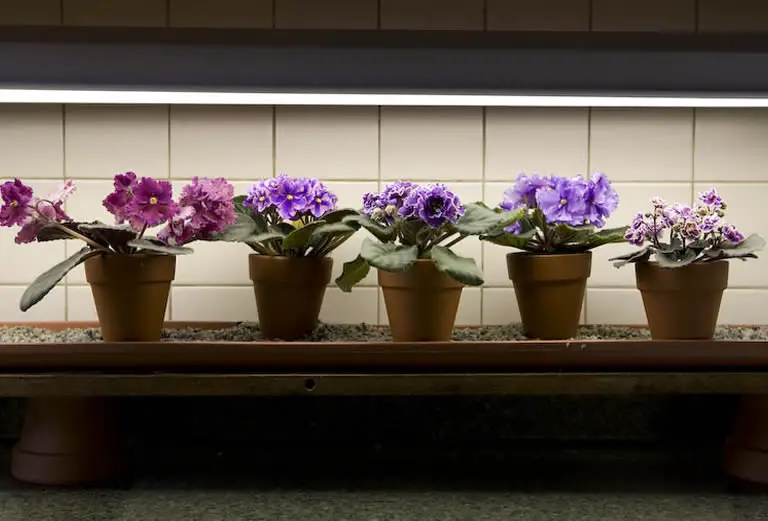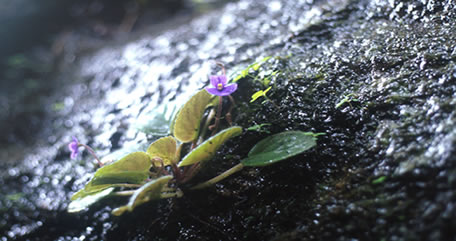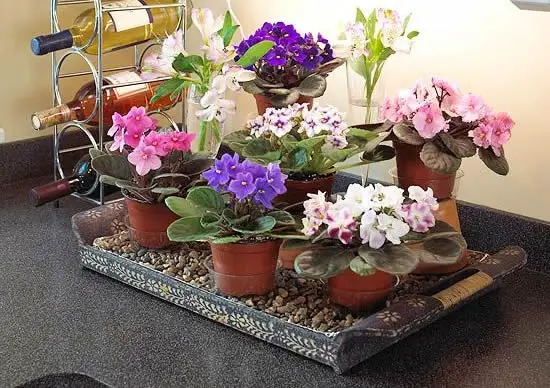Guide To The Essential Light Needs Of African Violets

In this article I cover everything you need to know about african violet light requirements. From direct and indirect sunlight requirements, for better placement of your plant, to the number of hours african violet require light, I outline all that you need to know about african violets and their light needs.
Table of Contents
- African violet light requirements
- How much sun african violets need to thrive
- The type of light that african violets need
- The devastating effects of direct sun on african violets
- When too much of a good thing is bad – african violets can get too much light
- The truth about growing african violets in low light
- Recap: African violet light needs
African violet light requirements
The african violet, scientific name Saintpaulia, is a common houseplant seen all across the US.
Although african violets share the name, they are not closely related to violets. There are several species of african violets each of which are flowering plants that stem from the family Gesneriaceae.
These plants are native to the tropical zones of eastern Africa and are found in shady higher elevation areas.
African violets are very popular as a houseplant because they are an easy-care plant that can thrive in low light conditions and they will bloom throughout the year.
Let’s take a look at the exact light requirements of the african violet so see how much sunlight the plant needs and the ideal positioning for a houseplant so it requires the correct amount of light and the correct type of light.
How much sun african violets need to thrive
When you first start to cultivate african violets, or you buy your first african violet houseplant, you may wonder where you should place the plant. The main concern is obviously light. But as some houseplants thrive best in direct sunlight and some in indirect sunlight you will want to know how much sun an african violet needs.
African violets require much less sun than many other common houseplants. African violets will thrive in indirect sunlight and will bloom best in dim light. On average an african violet requires about 12 hours of light but needs at least 8 hours of darkness per day to thrive.
Although african violets, like all plants, require light to grow, these particular plants do not respond well to direct sunlight. Placing an african violet in an area that gets direct sunlight will stress the plant and the sun will burn the plant leaves.
So, to keep your african violet healthy I suggest you ensure it gets about 12 hours of daily indirect sunlight but I also urge you to make sure your plant receives at least 8 hours of darkness per day. This is just as important if you are using a grow light as it is if you are using natural light.
The type of light that african violets need
I have already stated that african violets require about 12 hours of light per day but should any of this light be direct sunlight?
African violets do not need direct sunlight. In fact, you should not leave an african in direct sunlight at all. Direct sunlight will burn the leaves of an african violet. An african violet will thrive in indirect sunlight and will bloom best in dim light.
Direct sunlight is a not a friend to african violets. These plants naturally grow in high altitudes in shady, dimly-lit areas.

You can see from the image above that this naturally growing african violet is starting to bloom in a shady area. The plant is receiving indirect sunlight though it is growing in a dimly lit place.
You need to replicate these lighting conditions for african violet houseplants if you want strong blooms. You do this by giving the plant only indirect light, and by protecting it from direct sunlight, while also ensuring it has at least 8 hours of darkness every day.
Obviously you also need to ensure you are using the correct type of soil for your african violet.
The devastating effects of direct sun on african violets
Although african violets thrive in reduced light can you leave your plant in direct sunlight?
African violets should not be left in direct sunlight. Direct sunlight will burn the leaves of an african violet. This plant grows best in indirect light. It will also grow well in a dimly-lit area.
Because an african violet visually resembles many desert succulents owners mistakenly believe they can keep their plant in direct sunlight. This is not the case.
African violets react poorly to direct sunlight and should not be left on window ledge or other areas of the home that receive direct sunlight. As I have already stated, leaving an african violet in direct sunlight will result in burnt leaves. It will also stress the plant and reduce your chances of a bloom.
When too much of a good thing is bad – african violets can get too much light
Direct sunlight apart, can african violets get too much light – even indirect light?
African violets can get too much light. These plants bloom best in dim light and thrive in indirect sunlight. But african violets also require at least 8 hours of darkness per day. Never keep an african violet in direct sunlight.
African violets require about 12 hours of light per day. This should be indirect light.
The plant can be grown in a dimly-lit area though it will still require at least 8 hours of darkness per day. This means if you are using a grow light you must turn it off at night.
Although dimly lit areas are perfect for good african violet blooms it can be difficult for indoor gardeners that are new to this species of plant to tell exactly how dim the light should be.
I have found that if an african violet is not blooming it is almost always due to insufficient light.
If you find that your african violet refuses to bloom, move the plant to an area that has better light but ensure it is not positioned somewhere that means it will receive direct sunlight. A well lit area of the home that gets plenty of indirect light should help your plant to bloom.
If the african violet that is not blooming also has drooping leaves then you likely have a much more serious problem and should read this article and take the recommend actions immediately.
The truth about growing african violets in low light
So, from what I have outlined thus far, we can see that african violets have much lower light requirements than many other houseplants but does this mean that they can grow and thrive in low light conditions?
African violets grow well in low light conditions. In fact, african violets will bloom best in dim light.
However, one of the main causes for a lack of blooms in an african violet is insufficient light. So, try to keep your plant away from very dark areas. It will thrive in dim areas that receive sufficient indirect light for the plant to continue to grow.
Although african violets grow well in low light, like any other plant, they require light for photosynthesis in order to grow. If you deprive your african violet of too much light it will not have enough resources to produce a bloom.
As a rule-of-thumb you can position your african violet in an area that gets plenty of indirect sunlight during the day and complete darkness at night. If you position the plant in a very dark area then you may want to keep a grow light over it so you can give it a bit more TLC when it needs a “light” boost.

In the image above you can see that several african violet species are thriving in a well-lit kitchen area that is away from direct sunlight but that has plenty of indirect sunlight. This area is also completely dark at night thus offering the african violets good growing conditions.
However, this same area can become very dark in the winter months and so a grow light is kept above the plants and used occasionally to give them extra light.
Many houseplant lovers will keep a small grow light above their african violets to offer additional light, especially if they live in areas with prolonged dimly-lit periods.
Recap: African violet light needs
To sum everything up let’s quickly look at exactly what light an african violet needs.
African violets will thrive when they receive about 12 hours of indirect sunlight and at least 8 hours of darkness per day. Grow lights can help give african violets their light needs if grown in very dark areas.
If using a grow light be sure your plant gets a minimum of 8 hours darkness by turning the light off at night. African violets bloom best in dim light and should be positioned in areas of the home out of direct sunlight.
I use a small localized, inexpensive grow light that sits directly over an individual plant in a way that does not detract from the look of the plant.
Some gardeners and houseplant lovers will use long grow lights and place multiple plants under them but this limits where you can put your plants.
Although this has its place (see the featured image at the top of this post) I find this approach very limiting.
The whole point of houseplants is for home decor. Keeping all plants in one spot defeats much of the purpose of having houseplants.
By having small localized grow light over each plant you can place your african violets anywhere you want.
Thanks for reading! I'm Michael — houseplant fanatic and your Pinterest plant guide.
Follow me on Pinterest for fresh updates 🌿



